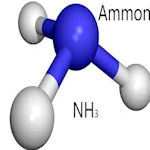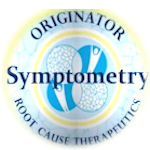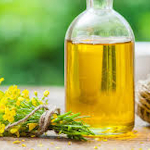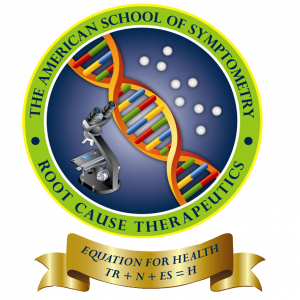
Self-Poisoning With Raw Foods
Deconstructive research in chromatographic laboratories keeps revealing one fact that raw foodists may not be aware of; and this fact is ammonia poisoning.
All leaves produce ammonia (NH3), with some leaves producing more ammonia than others. Ammonia is an extremely toxic gas. Our own colon bacteria do also produce ammonia to protect our colons from invaders, squatters and intruders like streptococcus and staphylococcus.
After twenty-four hours, the unused ammonia is circulated to the liver. The liver will produce ancillary enzymes to break the bonds of ammonia. After breaking these bonds, the enzymes will combine the atoms of nitrogen with oxygen and the atoms of hydrogen with the atoms of carbon to produce urea (CH4N2O). This is how our liver detoxifies ammonia by converting it to urea. The kidneys will then excrete urea, which is not toxic.
However, if clinical tests show that the level of BUN (blood urea nitrogen) is too high, and steps are not taken to decongest the liver, ammonia will start poisoning some of the eleven systems. Over time, all the eleven systems will be poisoned. Death by asphyxiation (suffocation) will be the inevitable outcome of such an internal poisoning.
The three sources of ammonia toxicity are: 1) raw edible leaves including lettuce salads, and sprouts 2) bathroom cleaning products and 3) an enlarged, congested or cancerous liver that cannot quickly produce enzymes to convert ammonia to urea.
Humans are not herbivores (sheep, goats, etc.) and defoliators (giraffes, moose, etc.) that produce enzymes to break down the methane gas and ammonia in leaves and in grass. Why eat raw food? Our ancestors who ate raw food were the sickest of the sick because they were self-poisoning. Why repeat their mistakes?
The symptoms of ammonia poisoning which Symptometry has been curing include:
- Frequent urination, especially at night.
- Urinary incontinence.
- Bladder paralysis where ammonia paralyzed the nerves in the bladder muscles.
- Urethra becomes painful when urinating.
- Bleeding hemorrhoids.
- Reddish urine.
- Bloody urine.
- Nausea.
- Heartburn.
- Gassiness or bloating with frequent flatulence.
- Nosebleed after eating any food.
- Sugar craving or addiction to sweets.
- Little or no appetite.
- Great appetite, but becomes satisfied after tasting the food.
- Frequent belching.
- Frequent hiccupping.
- Constant thirst.
- As if there is something in the throat that will not go away.
- Bleeding gums.
- Loose teeth.
- Dry mouth or throat.
- Persistent cough.
- Tendency to overproduce saliva.
- Swollen neck.
- Eyes burn like fire.
- Hands burn.
- Feet burn.
- Feet swell.
- Whitlow (inflammation of the fingertips).
- Trembling of hands now called Parkinson’s disease.
- Eye margins itch terribly.
- Vertigo or Meniere’s disease.
- Tendency to weep without reason.
- Tendency to talk during sleep.
- Child is very disobedient or stubborn.
- Lethargy or sluggishness. Is extremely slow in the morning.
- Lack of oxygen in the arteries and veins causing stasis or stagnation.
- Swollen lymph nodes
- Hates to have water on his or her skin, will not take a bath or shower for weeks.
- Weak heart.
- Person hears their heartbeat.
- Enlarged heart.
- Enlarged spleen.
- Enlarged liver.
- Fast heartbeat or pulse (tachycardia, paroxysmal tachycardia, flutter, fibrillation)
- Palpitation.
- Pain in the lumbar area where the kidneys are.
- Cannot hold urine for more than 30 seconds.
- Angina pectoris (chest pain).
- Heels are painful.
- Pain in the bones.
- Pain in the coccyx (tail bone).
- Amenorrhea (no menses) before age 54 or 55.
- Pulmonary edema aka pneumonia.
- Frequent accumulation of mucus in the throat.
- Laryngitis.
- Chronic or occasional hoarseness.
- Dyspnea (shortness of breath)
- Menses cause severe fatigue.
- Emphysema.
- Finds it difficult to breathe aka asthma attack.
- Arms and fingers are stiff.
- Skin peels off.
- Skin burns.
- Entire body is sore.
- Tendency to bruise easily.
- Cramps in the calves.
- Cramps in the soles.
- Legs are so weak that they can no longer support the body to walk or stand.
- Has nightmares almost every night.
- Claims he or she was visited by dead loved ones.
- Skin rash.
- Itching.
- Susceptibility to ulcers.
- Susceptibility to inflammations.
- Pain in the scrotum.
- Scrotal itch.
- Narcolepsy.
- Sleepiness during the day.
- Must sleep after every meal.
- Cold feet; must wear socks in bed.
- Hands are cold, must wear gloves.
- Restless leg syndrome.
- No sexual desire.
- Legs are frequently numb.
- Arms or fingers are frequently numb.
- Diphtheria. Ammonia is the growth factor of the bacterium called Corynebacterium diphtheriae.
Many individuals coughed until they died. Many more died of pneumonia, flutter, fibrillation, asphyxiation (suffocation), emphysema, etc. because the underlying cause of their disease (ammonia) was left in their bodies.
There are 610 additional symptoms of ammonia poisoning that Symptometry has cured, but time will not permit their publication.
People want to have a long life, but they know extraordinarily little about ammonia poisoning, and what to do to reverse it. Symptometry is now using basic hydrolysis and ionization to clear ammonia poisoning so that people can continue to live.
The underlying cause of every disease must be found and removed from the person. They should never be left in the person again. Thanks to scientific research, especially with chromatography and mass spectrometry, the world now has Symptometry. Diseases like narcolepsy and restless syndrome that were classified as mystery diseases, are now perfectly curable.
© Copyright 2021, The American School of Symptometry, NFP. No part of this publication may be reproduced or transmitted in any form or by any means, electronic or mechanical, including photocopying, recording, or by any information storage and retrieval system without the written permission of The American School of Symptometry, NFP. Library of Congress copyright number Txu 1-621-370, Washington D.C.


 Previous Post
Previous Post Next Post
Next Post